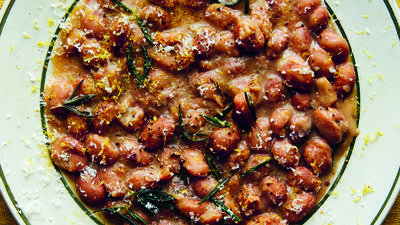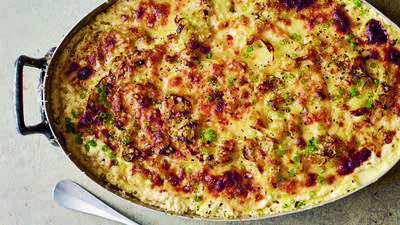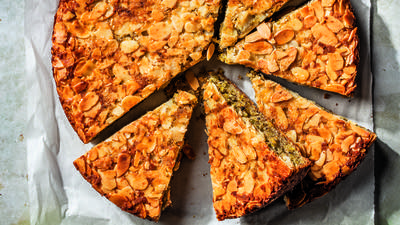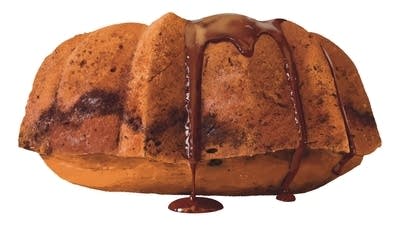
An Italian would never pair angel hair pasta with a chunky meat sauce, nor would one cover tortellini in Alfredo sauce. And an Italian would never, ever use a spoon to eat pasta -- unless that pasta is in soup.
Maureen Fant, co-author of Sauces & Shapes: Pasta the Italian Way, explains how to serve and eat pasta like an Italian.
1. Pair your pasta with the right sauce (Hint: Tortellini only goes in broth)
David Leite: I think that most Americans have absolutely no idea that certain pastas were made for certain sauces. What the hell do you Italians know that we don't?
 Maureen Fant
Photo: Francesca Ajò
Maureen Fant
Photo: Francesca Ajò
Maureen Fant: First of all, in the interest of disclosure, I am not Italian. I've only lived here for 35 years.
DL: That's close enough to being an Italian.
MF: I think so too.
It's not that the pastas were designed for the sauces because it's not that premeditated. It's just that certain pairings worked, people liked them and with generations they became embedded in the national psyche. Certain things work and certain things don't work. Certain pairings are so known, they are so familiar, that nobody would do anything else.
DL: Give me an example. What does a long noodle do?
MF: With a long noodle (spaghetti, spaghettini, linguine) you want something that coats the strand. You don't want the chunky sauces.
DL: How about pastas with nooks and crannies?
MF: That's where you put the chunky things like broccoli or little bits of sausages. That works very well with those nooks and crannies.
DL: One of the things I read in your book, which I actually was fascinated by, is that tortellini only goes in broth.
MF: Yes. Tortellini only goes in broth. Although the whole world is going to hell in a handbasket -- even in Bologna you will find tortellini served with sauce.
2. There is no such thing as Alfredo sauce
DL: When I came to New York in the '80s, I worked in a very high-end Italian restaurant. Tortellini with Alfredo sauce was the most popular dish.
MF: You have two problems there: One is there's no such thing as Alfredo sauce. The other thing: Certainly not on tortellini. [Ed. note: According to Oretta Zanini De Vita and Fant in Sauces & Shapes, "The first important thing to know about fettuccine Alfredo is that there is no such thing as 'Alfredo sauce.' The condimento is created directly on the pasta."]
3. Know when to add cheese (usually before sauce), and when to skip it
DL: You also have an interesting point in the book about how to cheese a sauce, if you will.
MF: It's not a national law, but if you put the cheese on the pasta before you put on the sauce, it will stick better and blend better.
With certain types of condiments, with sauces, you don't use cheese. That's partly because there are certain combinations Italians find inherently unpleasant, and partly because it's just not traditional in certain areas.
With fish it's rare to have cheese. We have some lasagnes and a few things that have a little bit of cheese, but basically if you’re having spaghetti with a fish sauce, you're not putting cheese on it. Pasta with garlic, with hot pepper -- certainly they don't have Parmigiano, and they tend not to have any cheese at all.
4. Eat pasta first,
then
the salad
DL: Since there's a lot of confusion about all these sauces and pastas, tell us how to eat pasta.
MF: First of all, pasta is eaten alone. It is not a side dish to the main attraction, nor does it have a side dish with it. You don't eat pasta and salad together. You eat pasta and then you eat the salad.
It's a primo piatto, meaning it's a first course, which you can't translate as an appetizer. Pasta is not an appetizer, it's often the main part of the meal, but it is served as a separate course. Pasta, rice or polenta, any of the major starches, is a first course followed by everything else -- and nothing with it.
5. To be perfectly proper, serve pasta on a plate
DL: What do you serve it in or on?
 Sauces & Shapes
Sauces & Shapes
MF: To be perfectly proper, you serve it on a plate. But trattorias and families will use a soup bowl, like a shallow plate.
Nobody here talks about pasta bowls. Pasta bowls are something of a new scene recently on the Internet. You have bowls because you have soup. Sometimes you might put the pasta in it, but in proper restaurants with proper service, it's a flat plate.
6. And never, ever use a soup spoon (unless your pasta is in soup)
DL: Do you serve a soup spoon alongside pasta for twirling?
MF: Never, ever, ever, ever. You serve a soup spoon if your pasta is in soup.
Pasta has many divisions; you can divide pasta along many lines and you have this family and that family. One family is pastasciutta and and another is pasta in soup.
Pastasciutta is pasta that is not suspended in a liquid. It is served by itself with sauce or with some kind of condimento -- whether it's sauce or not is another issue. But that is eaten with a fork.
The twirling in a spoon is permitted in only one case. That case is when you have your angel hair, which everybody loves, in broth, which is where it's meant to be.
DL: Not with sauce.
MF: Angel hair is not meant to be with sauce, it's meant to be in broth. In that case, the only way you're going to get it into your mouth out of the broth is by twirling it with your fork into a spoon. But then you deliver the spoon to your mouth, not the fork, because you have to deliver it with some broth.
 Fant's recipe: Cauliflower or Broccoli Rabe and Sausage
Photo: Gentl & Hyers / Sauces & Shapes
Fant's recipe: Cauliflower or Broccoli Rabe and Sausage
Photo: Gentl & Hyers / Sauces & Shapes
Fant suggests two sauces you can make in the time it takes for water to boil and pasta to cook:
The classic, when you have nothing in the house, aglio e olio: peperoncino, garlic, extra virgin olive oil and red pepper
Canned tuna (but canned, Italian, delicious tuna in olive oil, none of your packed-in-water jive), good tomato, onion, hot pepper, and olive oil
Before you go...
Each week, The Splendid Table brings you stories that expand your world view, inspire you to try something new, and show how food connects us all. We rely on your generous support. For as little as $5 a month, you can have a lasting impact on The Splendid Table. And, when you donate, you’ll join a community of like-minded individuals who love good food, good conversation, and kitchen companionship. Show your love for The Splendid Table with a gift today.
Thank you for your support.
Donate today for as little as $5.00 a month. Your gift only takes a few minutes and has a lasting impact on The Splendid Table and you'll be welcomed into The Splendid Table Co-op.




